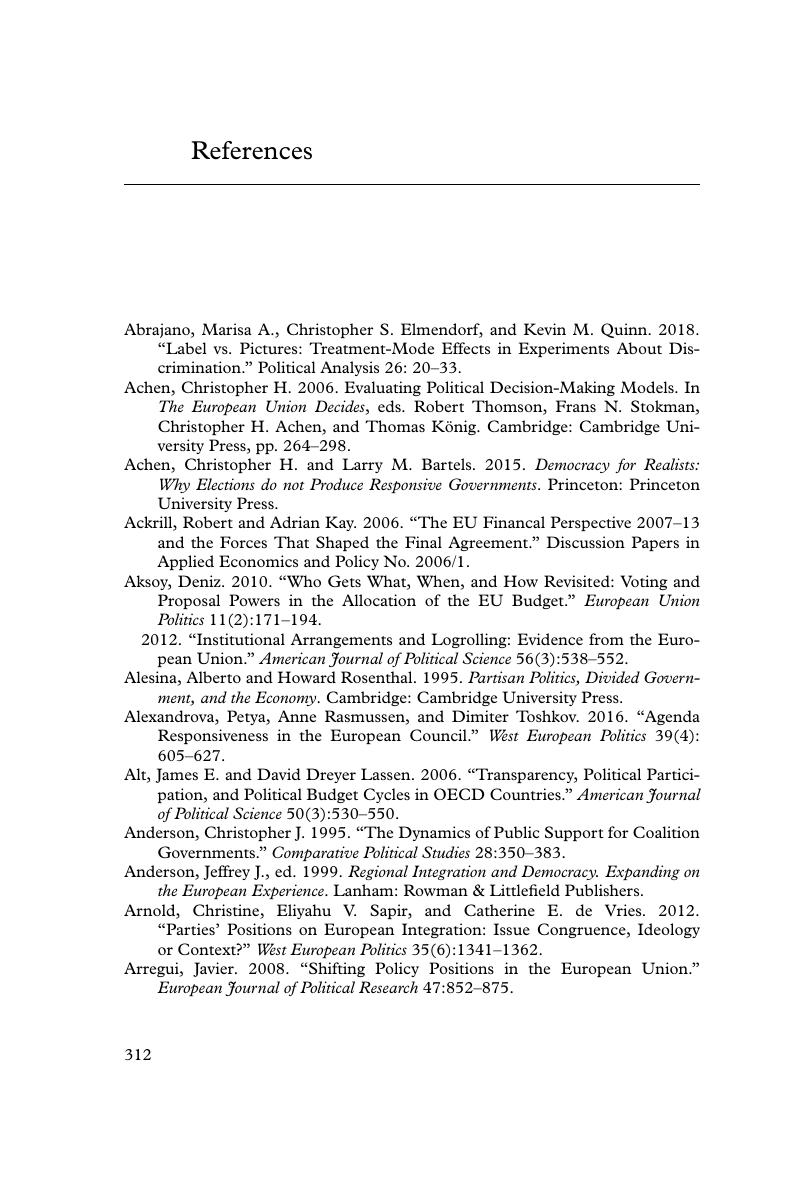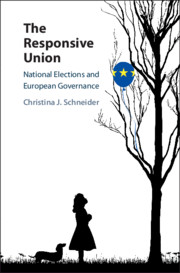Book contents
- Frontmatter
- Dedication
- Contents
- List of Figures
- List of Tables
- Acronyms
- Acknowledgements
- 1 Responsive Governance in the European Union
- 2 The Politicization of European Cooperation
- 3 Signals of Responsiveness: A Theory
- 4 The EU-Aware Voter
- 5 The EU Budget: Financially Trivial, Politically Substantial
- 6 Triumph and Agony in the 2007–2013 MFF Negotiations
- 7 The Legislative Leviathan Marionette
- 8 The Waiting Game: Après les élections, le déluge
- 9 When the Music Stops: The German Politics of the Greek Bailout
- 10 The European Republic
- References
- Index
- References
References
Published online by Cambridge University Press: 29 October 2018
- Frontmatter
- Dedication
- Contents
- List of Figures
- List of Tables
- Acronyms
- Acknowledgements
- 1 Responsive Governance in the European Union
- 2 The Politicization of European Cooperation
- 3 Signals of Responsiveness: A Theory
- 4 The EU-Aware Voter
- 5 The EU Budget: Financially Trivial, Politically Substantial
- 6 Triumph and Agony in the 2007–2013 MFF Negotiations
- 7 The Legislative Leviathan Marionette
- 8 The Waiting Game: Après les élections, le déluge
- 9 When the Music Stops: The German Politics of the Greek Bailout
- 10 The European Republic
- References
- Index
- References
Summary

- Type
- Chapter
- Information
- The Responsive UnionNational Elections and European Governance, pp. 312 - 333Publisher: Cambridge University PressPrint publication year: 2018



